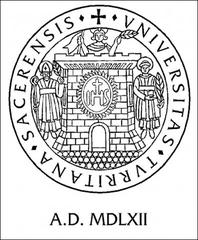G. A. Sanna National Museum Sassari: Visiting Hours, Tickets, and Historical Significance
Date: 03/07/2025
Introduction
Situated in the heart of Sassari in northern Sardinia, Italy, the G. A. Sanna National Museum is one of the island’s foremost cultural institutions. Founded on the vision of Giovanni Antonio Sanna—a 19th-century industrialist and patron—the museum offers a comprehensive journey through Sardinia’s rich archaeological and ethnographic heritage. Visitors encounter artifacts from the Neolithic era, treasures of the Nuragic civilization, Phoenician and Roman relics, and an extensive ethnographic archive showcasing traditional Sardinian textiles, costumes, and folk art. The museum’s architecture, reminiscent of a classical temple, underscores its role as a guardian of Sardinia’s unique identity, while recent renovations have further enhanced accessibility and visitor engagement.
This guide provides detailed, up-to-date information on visiting hours, tickets, accessibility, and highlights of the museum’s collections. It also includes practical travel tips and suggestions for nearby attractions, ensuring an informed and enriching experience for all visitors, whether you are a history enthusiast, cultural traveler, or scholar (SardegnaTurismo; SardegnaCultura; Estate in Sardegna).
Table of Contents
- Introduction
- Historical Background and Evolution
- Visitor Information: Hours, Tickets, Accessibility
- Highlights of Permanent Collections
- Guided Tours and Educational Programs
- Nearby Attractions and Travel Tips
- Frequently Asked Questions (FAQ)
- Conclusion and Further Resources
- Sources
Historical Background and Evolution
Giovanni Antonio Sanna: Founder and Benefactor
The museum owes its inception to Giovanni Antonio Sanna (1819–1875), a prominent Sassari native whose philanthropic legacy shaped Sardinian cultural heritage. Sanna’s passion for collecting art and archaeological materials culminated in a major donation to his hometown in 1878, forming the nucleus of today’s collections. His daughter, Zely Castoldi, donated the land on which the museum was constructed.
Institutional Development
Officially inaugurated on February 19, 1931, by Royal Decree No. 284, the museum’s neoclassical building was designed to reflect the “temple of knowledge” ideal. The institution quickly gained prominence through acquisitions, research, and the pivotal role of early curators like Gavino Clemente.
Collection Expansion and Modernization
Through systematic excavations and acquisitions, including the Bertolio, Reksten, and Dessì collections, the museum’s holdings have grown considerably. The collections are organized chronologically and thematically, spanning prehistory through the Middle Ages. Major renovations completed in 2022 have improved accessibility—such as ramps, elevators, and Easy to Read panels developed with ANFASS Onlus Sardegna—ensuring an inclusive environment (Estate in Sardegna; SardegnaCultura).
Visitor Information: Hours, Tickets, Accessibility
Location
- Address: Via Roma, 64, 07100 Sassari, Italy
- Centrally located, accessible by public transport, taxi, or on foot from Sassari’s historic center.
Opening Hours
- Tuesday to Sunday: 9:00 AM – 7:00 PM
- Closed on Mondays and public holidays
- Special hours may apply on the first Sunday of each month; verify current hours before visiting (WhichMuseum).
Admission
- General Admission: €6
- Reduced: €3 (EU citizens aged 18–25)
- Free Entry: Under 18, over 65, and other eligible groups
- Group bookings and guided tours: Advance reservation recommended
Accessibility
- Fully wheelchair accessible, with ramps, elevators, and accessible restrooms
- Gardens and exhibits feature Easy to Read signage
- Staff are available to assist visitors with special needs
Highlights of Permanent Collections
Archaeology
- Pre-Nuragic and Nuragic Periods:
- Neolithic ceramics, obsidian tools, Ozieri culture pottery
- Nuragic bronzetti (bronze statuettes)—iconic depictions of warriors, animals, and deities
- Phoenician, Punic, and Roman Eras:
- Artifacts from Turris Libyssonis (Porto Torres): funerary stelae, mosaics, coins, jewelry, and the notable Venus of Turris Libisonis
- Medieval and Modern Periods:
- Religious art, manuscripts, and ethnographic objects highlighting Sardinia’s diverse communities
Ethnography
- Traditional Sardinian costumes, textiles, jewelry, folk art, and musical instruments (notably the launeddas)
- The Clemente Collection forms the core of the ethnographic archive
- Painting collections are now displayed at the National Gallery of Sassari (WhichMuseum)
Guided Tours and Educational Programs
- Guided Tours: Offered in Italian and English by reservation; led by expert staff or archaeologists
- Workshops: Educational activities for schools and families focusing on archaeology, art, and traditional crafts
- Special Events: Lectures, temporary exhibitions, and cultural activities throughout the year
Nearby Attractions and Travel Tips
- Sassari Cathedral and Piazza d’Italia are within walking distance
- Explore Sassari’s old town for local markets, shops, and dining
- The museum’s location makes it a convenient starting point for discovering northern Sardinia’s archaeological sites and beaches
- Weekday mornings are best to avoid crowds; comfortable footwear is recommended
Frequently Asked Questions (FAQ)
Q: What are the museum’s visiting hours?
A: Tuesday to Sunday, 9:00 AM – 7:00 PM; closed Mondays and public holidays.
Q: How much are tickets and can I book online?
A: General admission is €6; reduced rates and free entry apply to eligible groups. Tickets are available at the entrance or, for special exhibitions, online.
Q: Is the museum accessible for visitors with disabilities?
A: Yes, the museum is fully accessible with ramps, elevators, and staff assistance.
Q: Are guided tours available in English?
A: Yes, upon request—advance booking is recommended.
Q: Where is the art collection?
A: The main painting collection is displayed at the National Gallery of Sassari on Via Santa Caterina.
Q: Is photography allowed?
A: Photography (without flash) is generally permitted, but restrictions may apply in temporary exhibitions.
Conclusion and Further Resources
The G. A. Sanna National Museum is not only a repository of Sardinia’s archaeological and ethnographic treasures but also a modern, inclusive institution at the heart of Sassari’s cultural life. With its accessible facilities, dynamic exhibitions, and educational programs, the museum is a must-visit destination for anyone eager to explore Sardinia’s unique history and living traditions.
For up-to-date information on opening hours, tickets, and events, consult the museum’s official website or trusted sources. Enhance your visit with the Audiala app, and follow the museum’s social channels for the latest news.

